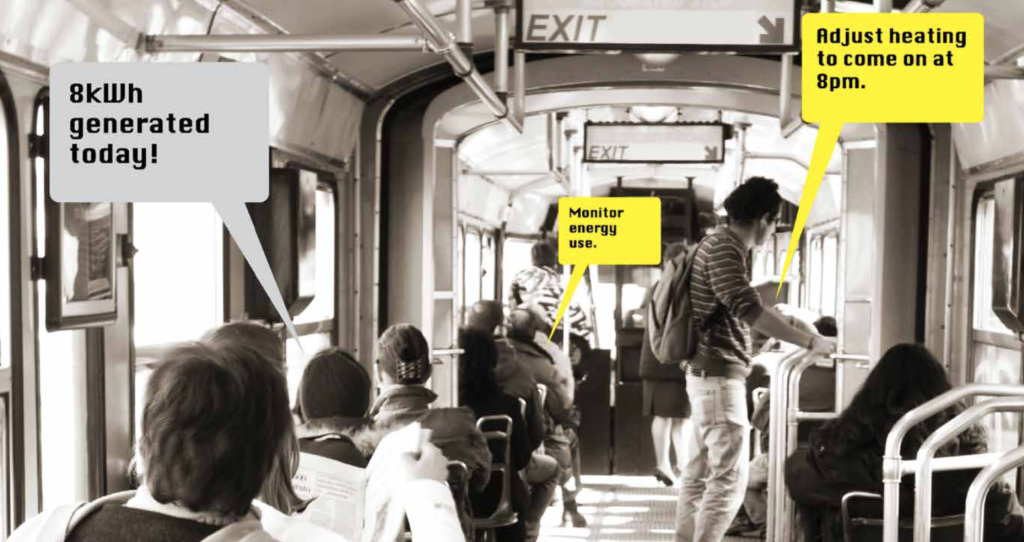Get Appy
With the arrival of smart phones, home automation was always going to take off. But how can you be clever about using all this smart technology?
I have a very old thermometer that was given out years and years ago by our state energy authority. It shows expanded comfort bands and some suggested temperatures for turning on your heating and cooling. Shortly after receiving it, I remember waking up one morning in my un-insulated weatherboard rental to find that it was four degrees in my bedroom. I wondered if it wasn’t time to move.
I have since used it as a back-up to check the temperature before turning on our (un-thermostatically controlled) heating and cooling, as we attempted to minimise their use. Thermostatic control is not a new technology of course, and it is a great deal more sophisticated than a mercury thermometer stuck on a wall. But the internet age of home automation has arrived, and with traditional home control systems being re-invented, the thermostat is no exception. Relatively new to the market is the smart thermostat – one that “learns” your typical temperature schedule and uses this to program itself. A schedule can be set, but as you interact with it to turn the temperature up or down, the device records your actions, and programs your heating or cooling system accordingly. The assumption is that a user can “teach” it to operate at a wider comfort band – a bit like me checking the mercury thermometer but with the ability to remember my preferences and act on them. A smart thermometer can also determine when the house is empty and shut all systems off. And of course it is controllable from a smart phone.
This is the key point now – what can you control on your smart phone or device? And the answer, with regard to your home, is – lots. Doorbells, deadlocks, alarm systems, heating and cooling, lights, power points, electronic windows, fridges, appliances, and even a crock-pot are each controllable from the phone.
The question is though, how do you use these smarts to reduce the energy you use? In theory every device you add to your home uses energy and there comes a point where something needs to be on irrespective of how smart it is – you are then back to relying on the efficiency of the system/appliance/light bulb.
Nevertheless there are some nifty technologies around. Approaching your home automation as an energy management system, rather than a way of setting scenes for your lifestyle, is more likely to achieve efficiencies in energy use.
A quick word about energy management systems: they monitor your energy use and in doing so allow you to manage what you use. They are becoming more sophisticated – they can now send you a text message if you have left your fridge door open or your air conditioner on. If you don’t routinely forget these things, then their major benefit is in their ability to link your major energy uses – heating/ cooling systems, appliances, lighting – and track energy used by each, even down to a specific power point. This very easily enables a user to identify where in a house the energy is being used, whether there is an abnormally high energy use from a specific source, and act accordingly.
Smart lighting has particular potential to save energy. Lights are much more likely to be left on when you leave the house or when they are not needed, such as when the house is unoccupied and they are being used to simulate someone being at home. Lighting can be incorporated into an energy management system, but there are now light bulbs with a smart device embedded within them. Using a wireless network, it is possible to remotely control these individual lights without using an energy management system. Smart switches are also available and it is possible to retrofit smart devices behind an existing switch. These allow remote control of whatever that switch controls.
Another way energy management systems can be used is to control the climate within a house by linking them to automated window systems. When the cool change comes through, you can remotely open your windows, allowing the house to cool down before you get home.
Home automation is becoming big business. There are major players in this field as we move closer to the internet of things. The main concern from a sustainability point of view is that we all embrace the idea of interconnected things, controllable by our phones. We all buy them. We all use energy to run them. And with all these “things” controllable from our phones it’s possible we could be spending even more time interfacing with the screens in our hands. Imagine if there was a different app for each device. However, the industry is apparently on top of this: automation companies are manufacturing products that are compatible with other companies’ products so they can work together.
Ideally these products start talking to each other as well, for example, when the alarm goes off in the morning, the bathroom lights come on; or when the shower stops, the coffee machine wakes up; and maybe when you lock the smart deadlock on your way out, a little red light starts blinking on the vacuum cleaning robot as it prepares to come out of the cupboard …



